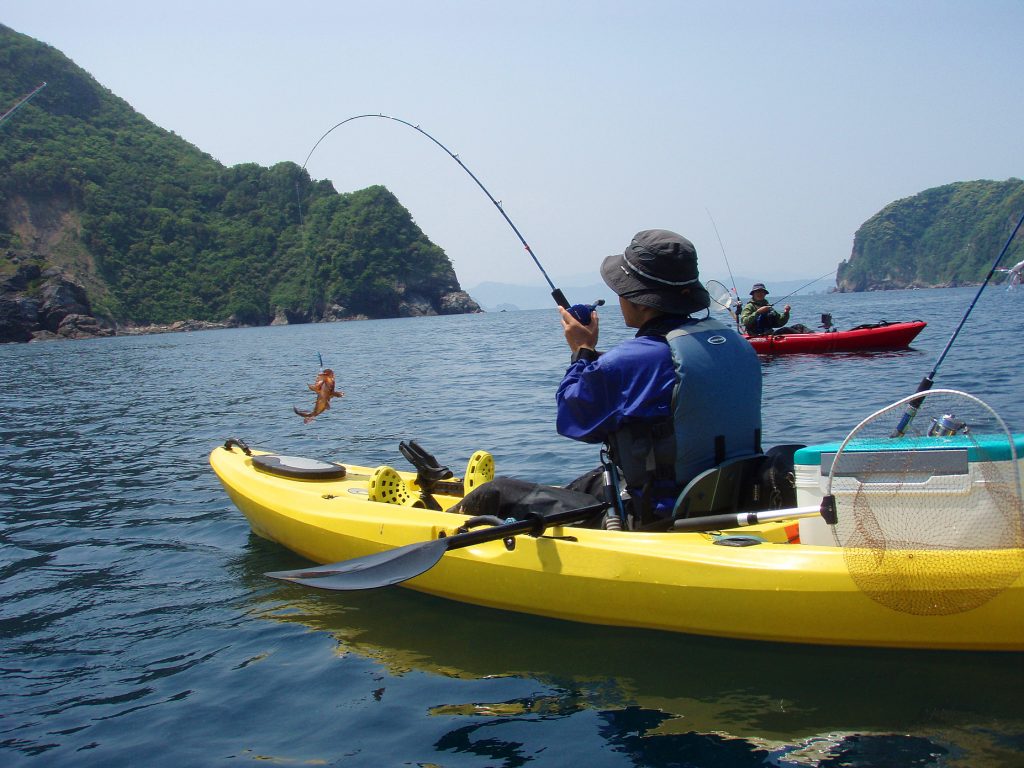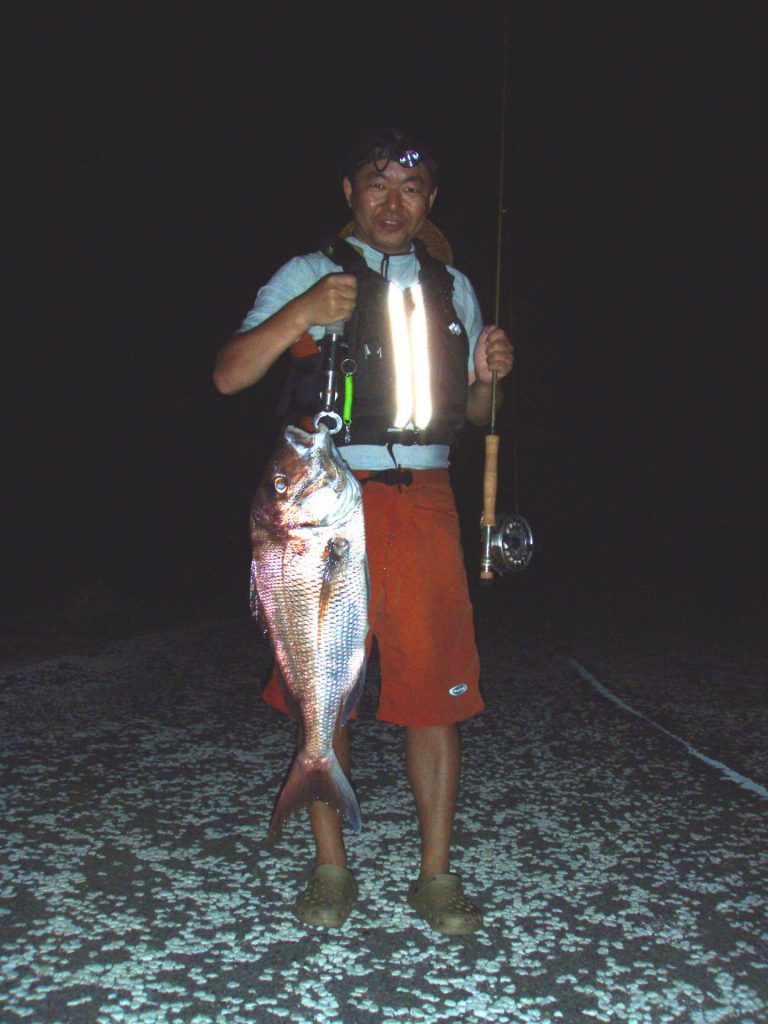Ask any serious anglers, and they will tell you they have an unconscious habit of immediately sizing up any body of water they come across for its “fishability.” However briefly we lay eyes on a given water front, stream, or even a man-made canal, for a few fleeting moments we find ourselves running down a checklist of questions in our mind.
Is the water clean? Are there likely to be fish I want to catch? Is the area pressured? Are the fish accessible?

That last question is usually the one that causes the most headaches because fish often congregate in areas too shallow for motor boats, or near shoreline too treacherous to access by foot. Fortunately, anglers worldwide have come to recognize the option of using purpose-built fishing kayaks to overcome this hurdle.
The sport has been slow to take off in Japan, but an increasing number of fishermen are discovering just how good it can get. We recently spoke with Kenji Watanabe of Montbell, an avid angler and pioneer of kayak fishing in Japan.
Can you give us some examples of popular kayak fishing areas?
Most kayak fishing in Japan is happening in saltwater locales. In the Kanto area, there are good points on the Chiba side of Tokyo Bay such as Kisarazu, all over the Miura Peninsula, as well further south in the Izu Peninsula.On the Sea of Japan side of Kansai, the waterfronts of Wakasa Bay (若狭), Maitsuru(舞鶴)and the Tango Peninsula (丹後半島) are popular, while the Mie coast offers plenty of action on the Pacific side. Further west and south, there are good points all over Shikoku and Kyushu.
Bass anglers have many options too, such as Lake Biwa near where I live.
What methods do you recommend for targeting fish?
You can do pretty much anything, but recently the most popular methods are light jigging for sea bream, yellowtail and sea bass, as well as “egging” for squid. You can also do traditional sabiki or komase pattern bait fishing for blue runners such as horse mackerel, chub mackerel and jacks.
What are the advantages of kayak fishing?
- First, you can catch a lot of fish.
- Kayaks have exceptional maneuverability.
- Compared to rubber boats, there is very little wind resistance.
- Kayaks are quiet and have little impact on the environment.
- Beginners get used to kayak fishing easily.
- Kayaks are just a lot of fun.
I started boating trophy sea bream and sea bass from kayaks because I can access areas quietly and stealthily. Among kayak anglers, there is a sense that we are pioneers because we are finding previously un-fished points and freely developing new methods and styles to catch fish without the assistance of boat captains. There are few spatial constraints; for example, fly anglers and beginners need not worry about what is in their blind spots as much when casting.
Offshore we can do incredible things such as paddle into frenzying fish without spooking them. If we have a dorado, on the line we can enjoy seeing them leaping out of the water right in front of our eyes.

Do you have any advice for newbie kayak anglers?
Saltwater anglers especially should not go out by themselves, take weather conditions into consideration and make sure you are not going so far out, you don’t have the energy to paddle back to shore. There are also the common sense things such as always wearing a personal floatation device, making sure you’re dressed for the elements and securing your gear with tie-ons.
The Japan Recreational Canoe Association regularly holds seminars on paddling and self-rescue techniques.
Montbell also holds kayak events for beginners.
What precautions, rules or regulations should you be aware of?
The biggest precautions have to do with unloading and launching. Try to unload your gear away from other people’s vehicles and be sure to launch in an area out of the way of motor boats. Be especially careful around ports and don’t assume you can freely launch without permission. Once you’re on the water, it’s best to use a kayak flag, so other boaters can see you.
As far as regulations, talk with local fishing or boating shop staff to see if the area you want to fish is off limits or if there is any other essential information you need to be aware of. There is usually information available by phone or through local Websites.
Interested readers can visit the nearest Montbell shop for more info on kayak fishing in their area or check out the range of kayaks available in Japan.





